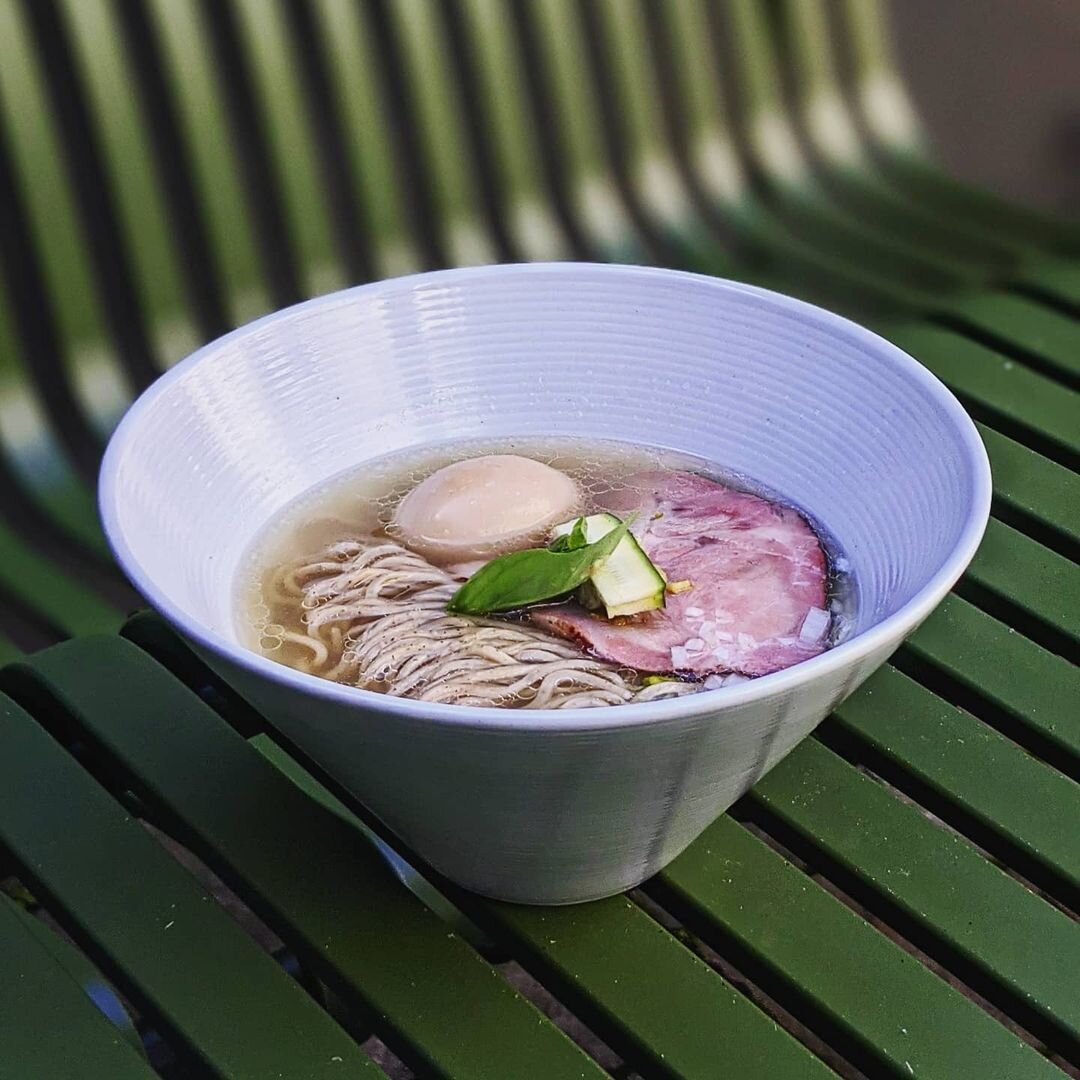Ramen Tare Umami Hack
This is my tare recipe. It utilizes modern fermentation techniques (inspired by my garum recipe) to increase umami to insane levels.
If you’re new to ramen, tare is the seasoning element in a bowl: the soup's primary source of umami and salinity. Check out this post on tare to learn more.
I use this tare recipe for my clam shio ramen. While I’m constantly iterating both the broth and the tare of my clam shio ramen, I plan to regularly update this post with my latest iteration.
Why bother sharing my tare recipe if I’m always changing it? Well, the primary reason is to inspire more ramen chefs to utilize fermentation. This recipe uses a modern cooking technique (inspired by my garum recipe) that is not utilized by literally anyone else. Rather than add umami to the tare (e.g. via MSG), this technique literally converts the proteins already in the tare into umami. This creates a more complex taste that might surprise those desensitized to MSG.
Before we get started
As I’ve previously written, there’s no perfect tare. Before you use this tare, it’s worth considering what I combine it with.
The broth: I use this tare with a double soup of (1) pork/chicken stock and (2) clam/mussel stock. I adjust the ratios of those two stocks depending on how my test bowl tastes. If you’re not using clam/mussel in your broth, you might want to increase the seafood in the tare.
The aromatics: My broth is cooked with napa cabbage for two hours and charred onion for one hour. This increases sweetness in the broth, so I don’t use sugar or mirin in my tare. If you’re not using aromatics that sweeten your broth, you might want to add sugar or mirin.
The oil: I use this tare with an oil that typically uses ginger and garlic. I occasionally add porcini or preserved citrus to this oil. Ginger and/or preserved citrus increases the acidity of my ramen, so I need less acidity in the tare.
As always, be sure to taste the ramen in a test bowl before serving others. Check out my tare framework on how you can adjust the tare to correct your bowl of ramen.
ingredients
This makes about 900 mL of tare, enough for 20 bowls of ramen. The water activity is low enough that you can store it for weeks in the fridge.
1. Freeze-dried pancreas supplement: You need freeze-dried pancreas with an active and ample supply of protease enzymes. The protease enzymes in this supplement are what will convert the proteins in the other ingredients into umami. I use this pork pancreas supplement here.
2. Kombu: 15 grams. Ma-kombu preferred!
3. Niboshi. 20 grams. The ones I buy have been gutted/beheaded before they were dried.
4. Dried shrimp. 15 grams.
5. Dried shiitake. 15 grams. Sometimes I switch this out for porcini.
6. Salt. 10% of weight of final product. I use a mix of kosher salt and smoked birch salt.
7. Sake. Around 300g. Preferably not the worst you can find!
8. Water. When I’m really trying to impress someone, I buy a soft filtered water to make my ramen. Otherwise I just use tap water.
9. Shallot. 1 big guy.
Instructions
Cut slits in the kombu to increase surface area. It is easier to remove the kombu later when it is a single piece, so I recommend cutting the kombu to look like a comb.
Combine 900g water, 15g dried mushroom, and 15g kombu. Let sit in the fridge overnight.
Cook the above sous vide at 140ºF for 1 hour.
Remove the kombu (kombu doesn’t like higher temperatures) and add 20g niboshi and 10g dried shrimp. Increase temp to 176ºF, then cook for 30 minutes.
Turn the temperature back down to 140ºF. We’re doing this because the enzymes can’t survive at 176ºF. If doing sous vide, just add cold water to the water bath.
Remove a little bit of the dashi and put it in a bowl. When this dashi in the bowl measures less than 140ºF, add the contents of 2 pancreas pills (weighing 1.2g total) to the bowl and mix thoroughly. Then add the contents back into the sous vide bag. Cook at 140ºF for an hour. Over the course of that hour, the enzymes will break down any free proteins in the dashi to increase umami.
Separately, add 300g sake, sliced shallot, and 5g dried shrimp to a pot. Reduce by half and then strain.
Strain the dashi and weigh it. Divide the weight by 4 and add that amount in the reduced sake. Then add 10% of the total weight in salt.
I typically add 40mL to 300mL of broth.
This is the starting point, but I still do the taste-test described above. You always gotta respond and react. Godspeed!
